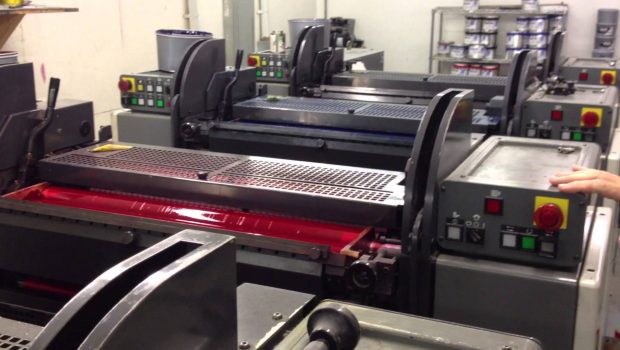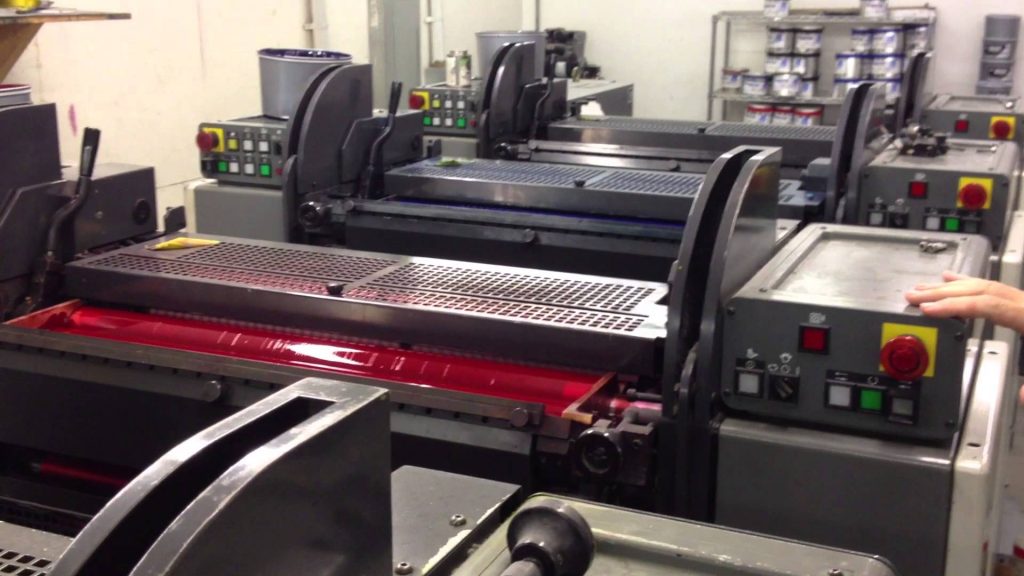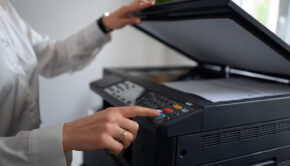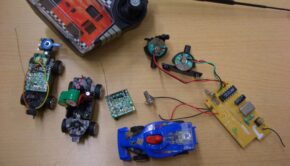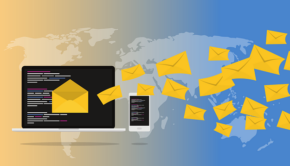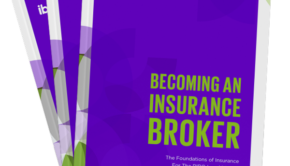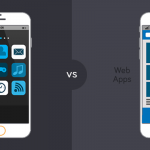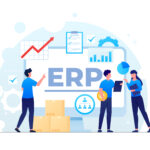Want to Buy a Commercial Printer? Six Things to Consider to Make the Buying Process Less Daunting
Upgrading to a high-quality roll to roll commercial printer is an investment that many businesses are considering, as outsourcing or equipment lease options become less affordable. The capital cost of a commercial printer can range from under ten thousand dollars for smaller units, to more than fifty thousand dollars for large textile production machines. The cost of retaining old and wasteful technology is by far, more expensive however.
If you are reviewing roll to roll and screen printers for your business, there are quality domestic and international manufacturers to choose from. We will discuss the innovative technology and how commercial printing has evolved rapidly, and provide six tips to help narrow down the best purchase choice for your organization’s needs.
Making Lithography and Die Cutting Obsolete
Industrial printers have advanced significantly within the past twenty years. In fact, when you look at industrial uses of lithographic printing, it is difficult to imagine businesses today profiting from the amount time, error and waste that was created by the now outdated process.
Greeting card and paper novelty manufacturers had to endure the inefficiencies of lithographic printing, a process that involved a metal plate to transfer a color print to multiple pages. The offset of the printer, or gutter and margin areas would then have to be transferred to a die cutting machine, to accurately trim the paper edges. This created numerous problems, including increased costs due to paper waste, as well as scrapped print runs, if die cutting (or the lithographic print) was not aligned. Human error factored heavily into increased costs for commercial printers.
Today, roll to roll screen printing, a new technological advancement, has virtually eliminated waste and the cost of die cutting, by producing accurate, fully automated prints. The high precision method nets zero scrap materials, and the drip-proof ink systems of contemporary screen printers auto-correct color and saturation, to ensure high-quality prints for paper, packaging, ceramic products or advertising materials.
Choosing the Right Roll to Roll Screen Printer
The cost of buying a high-quality and durable printer requires some preplanning, particularly if you are upgrading from a smaller model or flat-bed version. Before you begin narrowing down selections and models, an evaluation of your production needs and manufacturing process is required, to ensure that you invest in the right printing solution for your business.
- Software Applications
Will the new roll to roll commercial printer work with software that is already in use in your business? Professional printing technicians are trained to work with CAD or Illustrator, but some international models may be configured to work with a proprietary software platform or dashboard, that may require training. Ensure that the new machine will not come with a hidden cost of software retraining for staff, which can add to your purchase expense and delay production and profitability.
- Maintenance Costs
Most wide format roll to roll or flatbed printers require daily maintenance. During maintenance periods, production schedules are impacted, reducing the efficiency and profitability of your printing business.
When high volume printers are used daily, the print head and surrounding areas can become contaminated by debris including dust, and printer ink. Cleaning the printheads) can take 1-2 hours, depending on the size of the unit. However, new roll to roll printers are designed with air filters to restrict and minimize debris, and some units offer built in fabric wiping systems that self-clean daily, reducing scheduled maintenance to once or twice a month.
- Base Model and Accessories
When buying a roll to roll printer, it is important to evaluate additional accessories that can be used to optimize output, provide enhanced safety and reduce waste. Commercial printer manufacturers will offer a base price with several added features that are optional, but which may be very valuable to your business process.
- Ink Costs
There are many different ink types to choose from, including UV, solvent, latex, and aqueous or eco-solvent (environmentally friendly) options. For predominantly vinyl printing (i.e., signs and banners), solvent inks are the standard, but UV inks are appropriate for substrate materials that other inks have difficulty penetrating.
White inks are required for many wide-format options on transparent vinyl materials, including window graphics and POP or marketing displays that will be installed with backlighting. Vehicle graphics or ‘skins’ can require specialty inks that offer metallic tones. Specialty inks are more expensive, but provide additional creative options and saleable products.
- Manual and Automatic Cutting Options
For standard mass print jobs, using automated cutting on a roll to roll printer saves time and money, and precision machine cuts eliminate human error and waste. However, depending on the textile or material being printed on, for instance a contoured design may require manual cutting to avoid stretching or distortion of the image. To optimize production, consider a commercial printer that allows for both options.
- Roll Weight Capacity and Transfer
Industrial roll to roll screen printers must handle varying material weights on the roller. Whether you are printing vinyl, fabric, paper or other mesh materials, evaluate the stability and performance of the roller system. Many commercial printers can withstand up to 200 kg in weight or more, for high-capacity printing that will also eliminate the need to stop production for roller changes. The printer should also have an integrated controller to manage tension, and traction force that can be adjusted per the job material.
Even though much of advertising and marketing has gone digital, the print industry continues to thrive, as marketers integrate visual advertising in daily experiences for consumers. The U.S. Department of Commerce, Bureau of Labor Statistics reported that printing industry shipments in August of 2015 were $7.28 billion dollars, with an average of more than $7 billion per month for six months of that year.
Consider your purchase and expansion to be a lucrative investment in an industry that has rebounded, as advertisers take a second look at POP and display advertising in a variety of mediums and creative applications.

